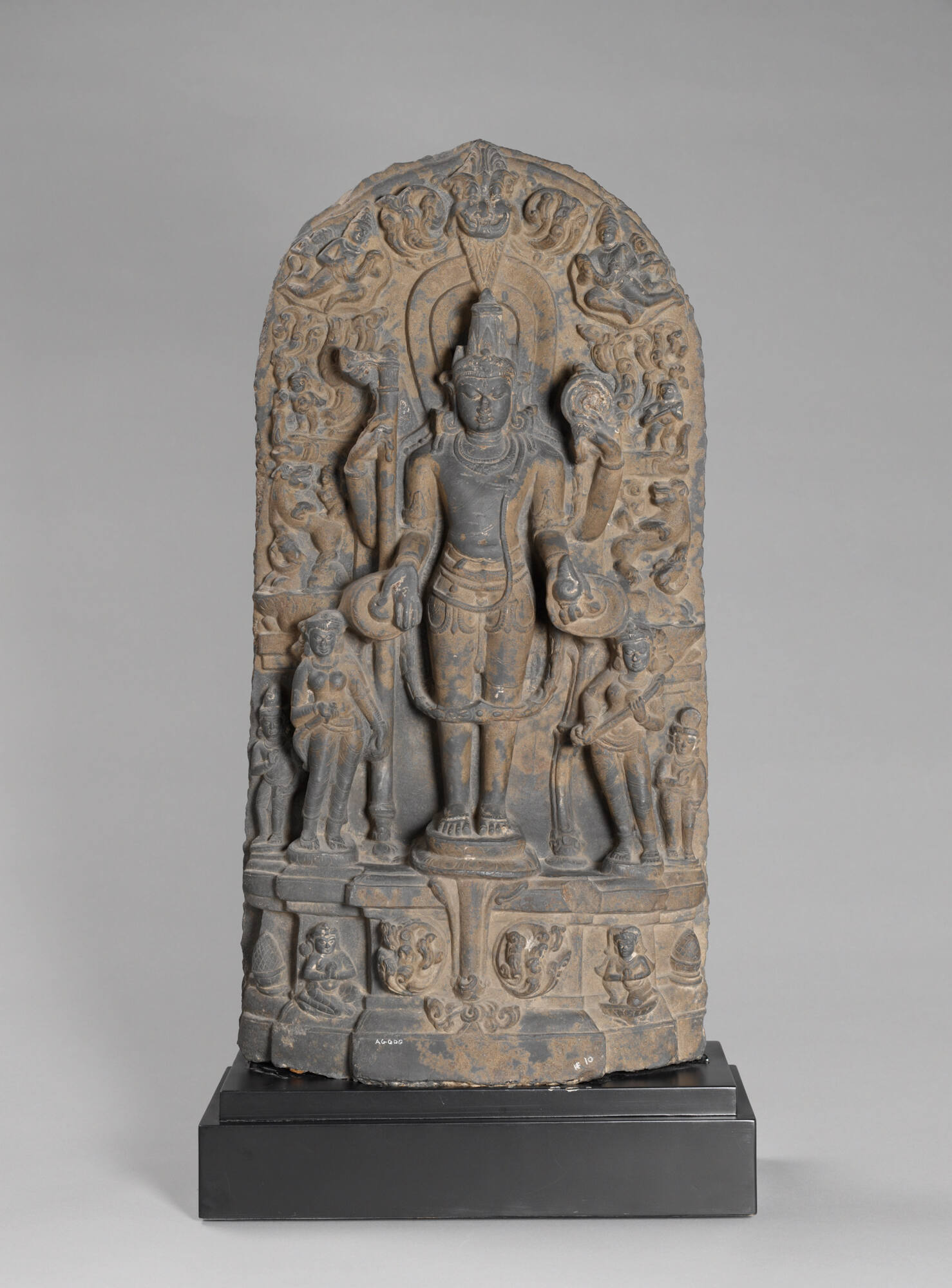
Object Details
Culture
Indian
Date
11th century; Pala period
Medium
Carved dark grey stone with traces of polychrome
Dimensions
28 1/2 × 13 1/4 inches (72.4 × 33.7 cm)
Credit Line
George and Mary Rockwell Collection
Object
Number
88.002.155
Here the Hindu god Vishnu stands in a rigid pose known as samapada. In his upper hands he holds the (…)
Here the Hindu god Vishnu stands in a rigid pose known as samapada. In his upper hands he holds the mace and the discus; in his lower hands he holds a conch and presents the varada (gift-bestowing) gesture with a lotus blossom carved in his palm. He wears a garland so long that it hangs down to his knees. The rather stiff stance of the god is contrasted with the graceful swaying poses of his female attendants: Sri Devi, who holds a fly-whisk, and Sarasvati, who holds a musical instrument. At the apex of the stele is an auspicious kirtimukha (face of glory) flanked by two vidyadharas, holding shield and sword. The Pala kingdom ruled an area encompassing parts of modern Bihar and West Bengal in India and the nation of Bangladesh. During the four-hundred-year reign of the Pala dynasty, the area was a vital center for Buddhism and Hinduism that attracted monks and pilgrims from many parts of Asia, including Nepal and Tibet, China and Southeast Asia. Visitors introduced many aspects of Pala culture and art upon return to their homelands, thus widely disseminating one of the most influential Indian religious sculptural traditions.












